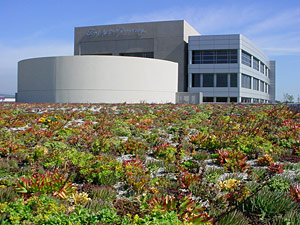Managing Wet Weather with Green Infrastructure Handbook Series published by United States Environmental Protection Agency

Green Infrastructure Municipal Handbook
Written from the American perspective, the Municipal Handbook is a series of documents published by the United States Environmental Protection Agency (USEPA) to help local officials implement green infrastructure in their communities.
Handbook topics cover issues such as financing, operation and maintenance, incentives, designs, codes & ordinances, and a variety of other subjects. The handbook documents are intended to serve as “how to” manuals on these topics, written primarily from the standpoint of municipal implementation.
Introduction to Published Chapters
The handbook is being produced in sections, with each new element being released as it is completed. Four chapters have been released to date:
-
Funding Options (PDF) (16 pp, 658K) – This chapter on funding options describes strategies and provides case study examples of how local governments are generating reliable funding for green infrastructure. In order to effectively manage and minimize rainwater/stormwater runoff with green infrastructure, municipalities must establish sustainable funding sources to move beyond the pilot phase and create a comprehensive green infrastructure program. This document identifies and discusses the two most common funding options communities are using for green rainwater/stormwater infrastructure – stormwater fees and loan programs. A third source of funding – grant programs – is also available in limited amounts to support green infrastructure projects.
-
Retrofit Policies (PDF) (23 pp, 2.37MB) – This chapter explores policies and incentives used by municipalities to facilitate green retrofits within their stormwater programs. This document also troubleshoots the institutional and regulatory challenges of incorporating green retrofits into municipal infrastructure, and provides some solutions and case studies.
-
Green Streets (PDF) (19 pp, 1.8MB) – This chapter evaluates programs and policies used to integrate green infrastructure into public spaces, roads and other transportation networks. The result is often an innovative system that includes a variety design elements such as street trees, permeable pavement, bioretention, and swales. The municipal case studies in this chapter highlight the benefits of greening transportation networks.
-
Rainwater Harvesting Policies (PDF) (16 pp, 1.45MB) – This chapter addresses harvesting principles, designs, example code requirements, and policies and incentives of implementing a municipal rainwater harvesting program. Rainwater harvesting can reduce stormwater runoff, conserve potable water, and provide environmental and economic benefits. Barriers to implementation are also addressed, and case studies from across the country demonstrate successful rainwater harvesting programs.
To learn more about how the United States Environmental Proectional Agency is now approaching integration of rainwater and stormwater management with infrastructure solutions, click on this link to the USEPA's Green Infrastructure Homepage.
Managing Wet Weather with Green Infrastructure
According to the USEPA, green infrastructure is an approach to wet weather management that is cost-effective, sustainable, and environmentally friendly. Green Infrastructure management approaches and technologies infiltrate,  evapotranspire, capture and reuse rainwater/stormwater to maintain or restore natural hydrologies. See Examples of Green Infrastructure and Design Approaches.
evapotranspire, capture and reuse rainwater/stormwater to maintain or restore natural hydrologies. See Examples of Green Infrastructure and Design Approaches.
A green roof sits atop Ford's Premiere Automotive Headquarters in Irvine, California (Photo Credit: Roofscapes Inc.)
Watershed Scale
At the largest scale, the preservation and restoration of natural landscape features (such as forests, floodplains and wetlands) are critical components of green stormwater infrastructure. By protecting these ecologically sensitive areas, communities can improve water quality while providing wildlife habitat and opportunities for outdoor recreation.
Site Scale
On a smaller scale, green infrastructure practices include rain gardens, porous pavements, green roofs, infiltration planters, trees and tree boxes, and rainwater harvesting for non-potable uses such as toilet flushing and landscape irrigation.
Posted January 2009

